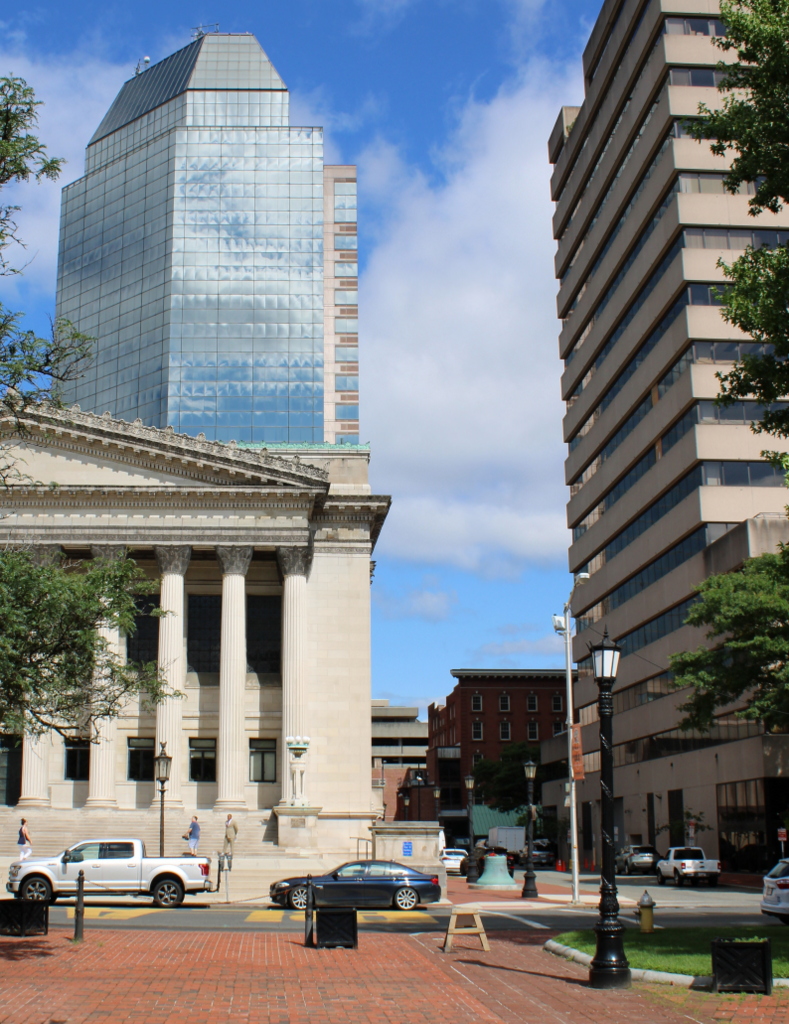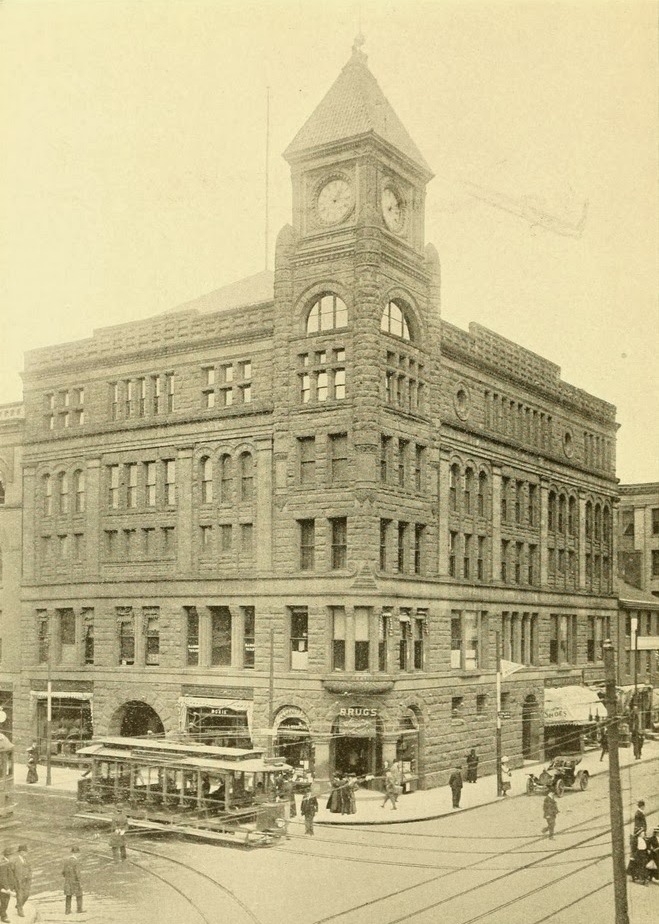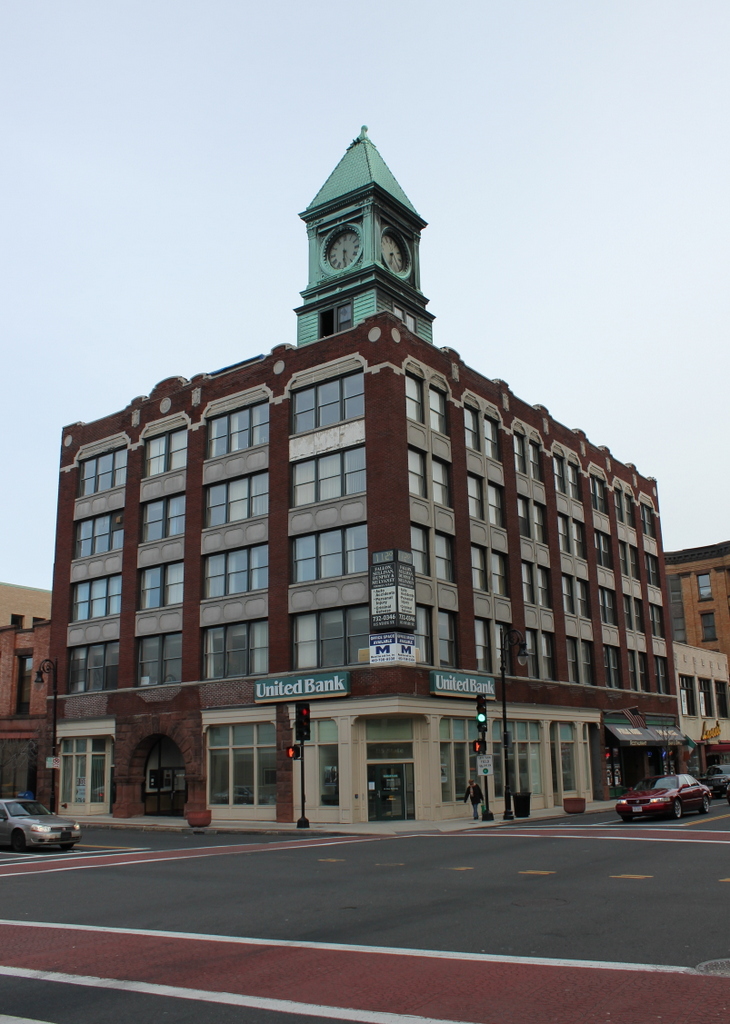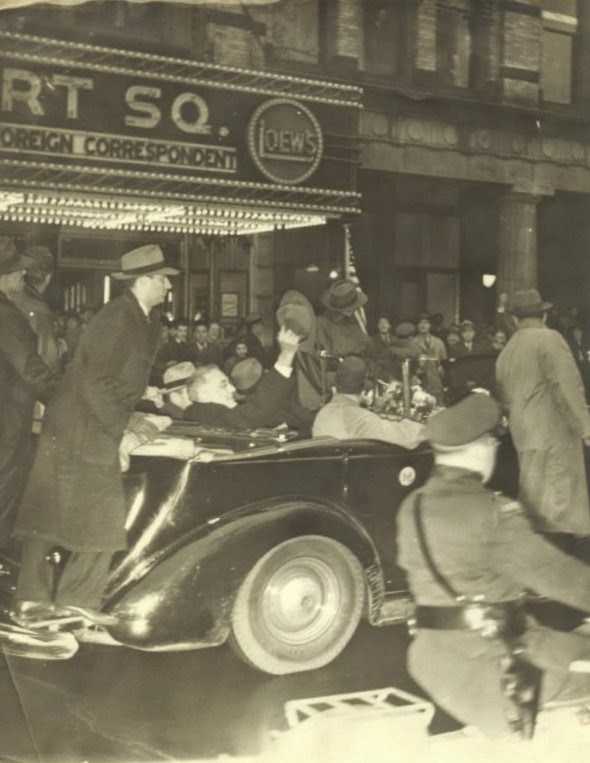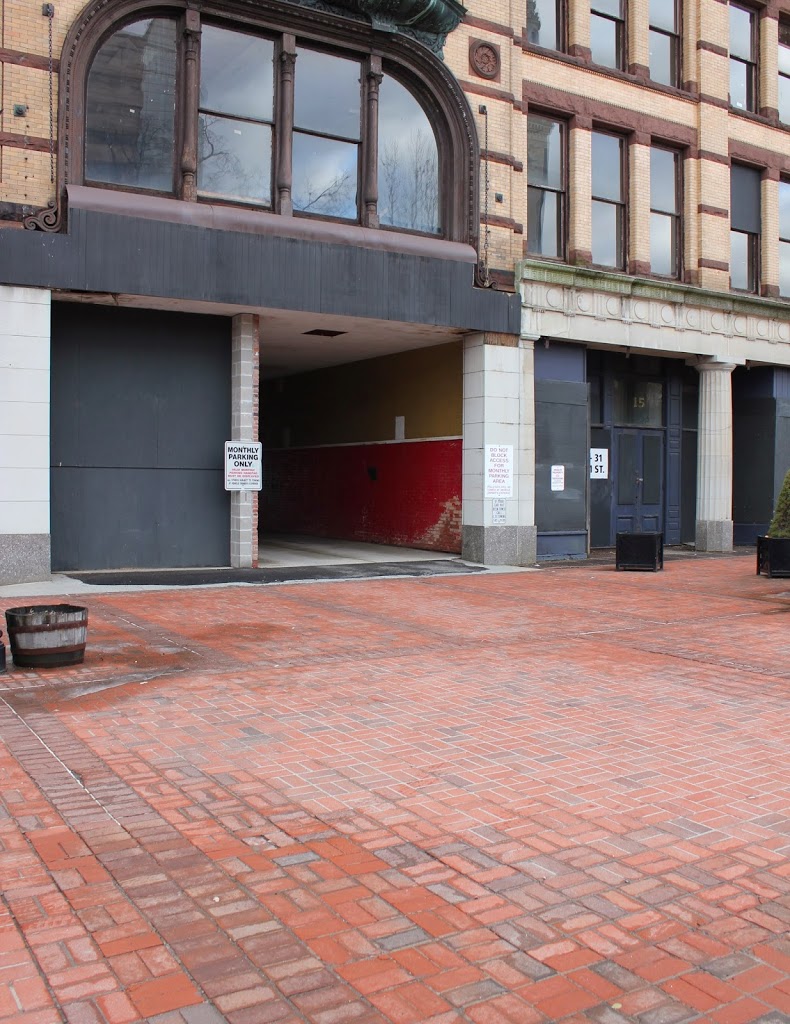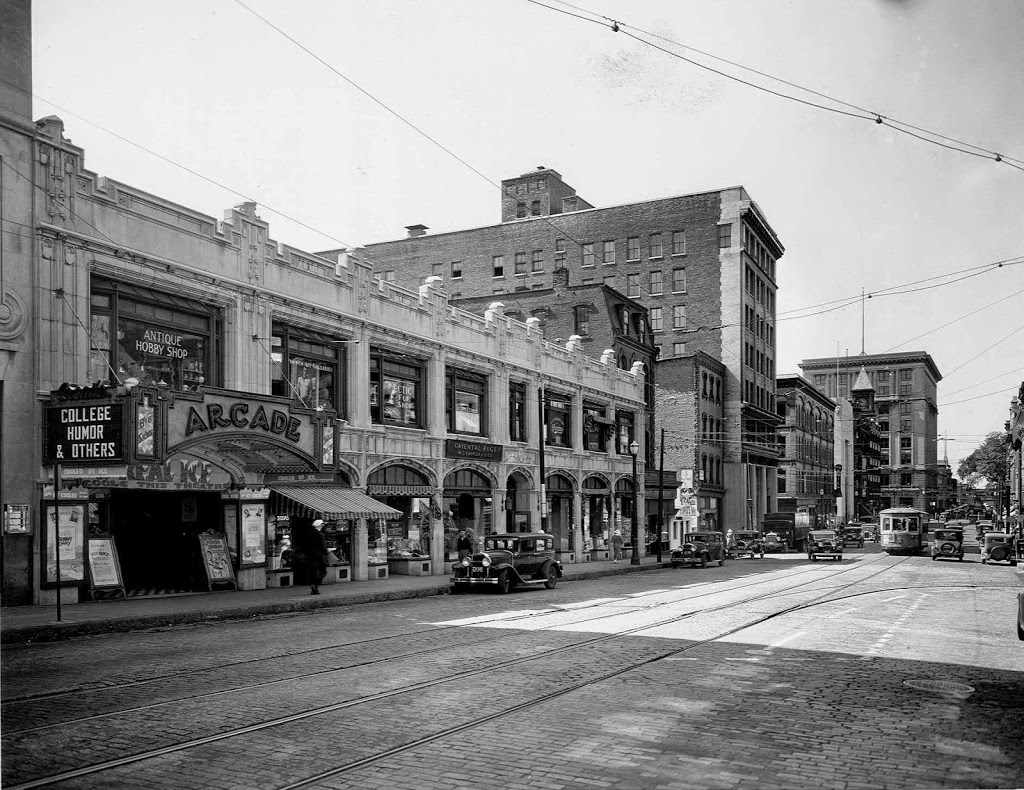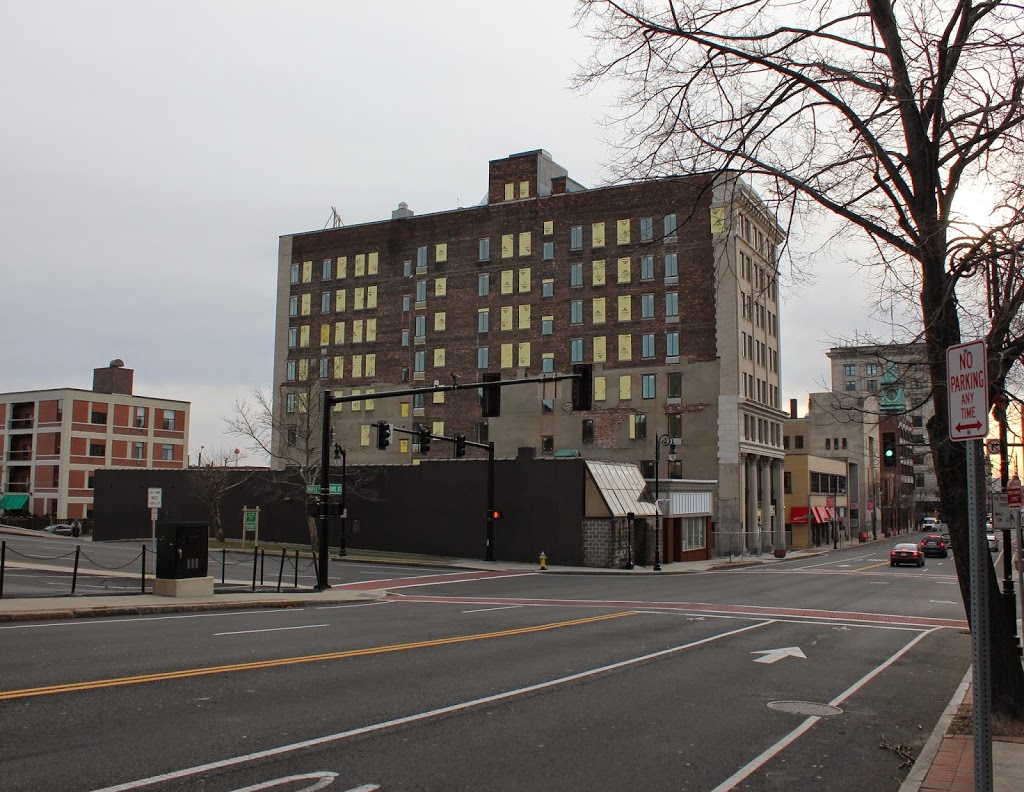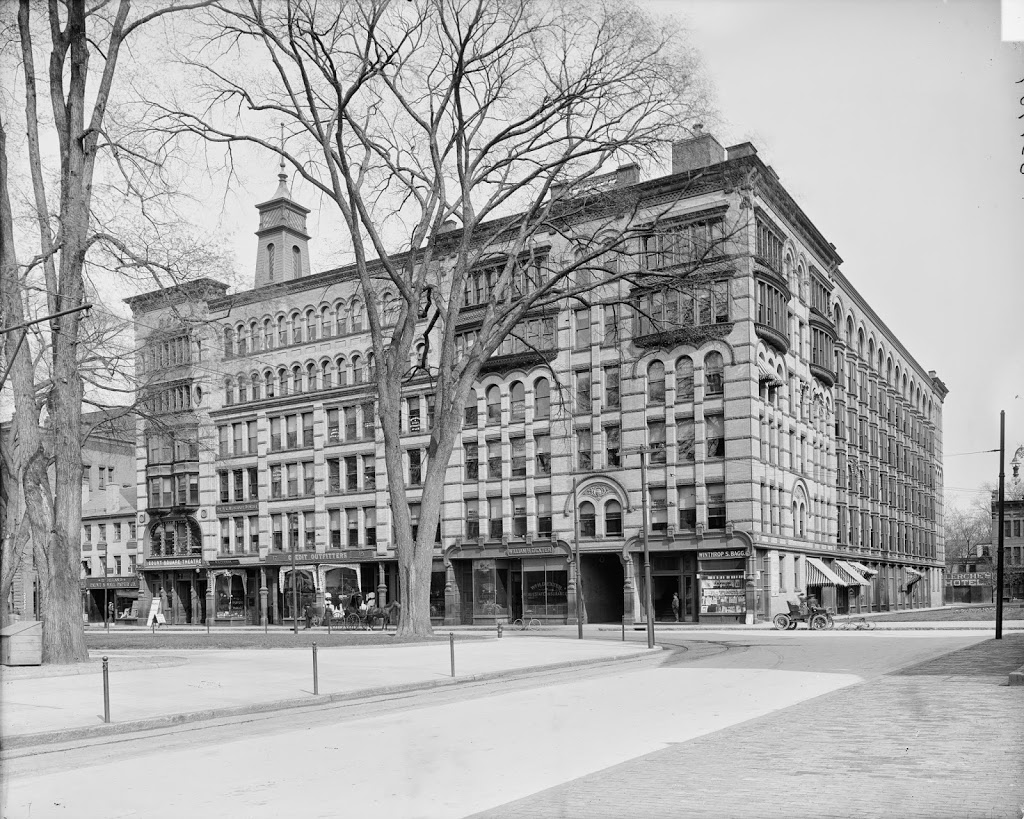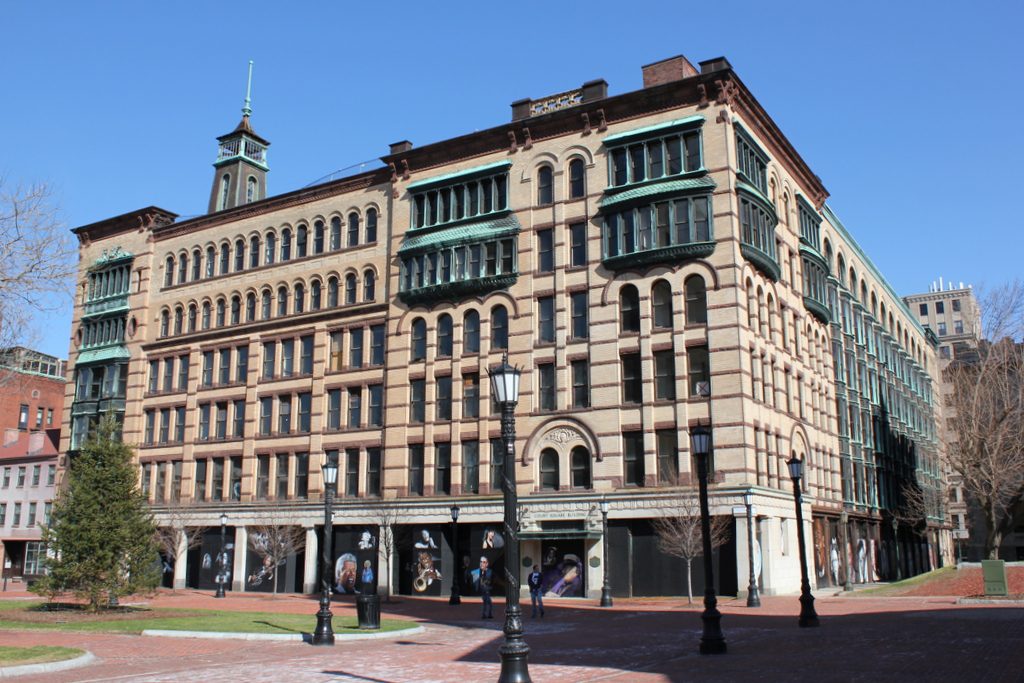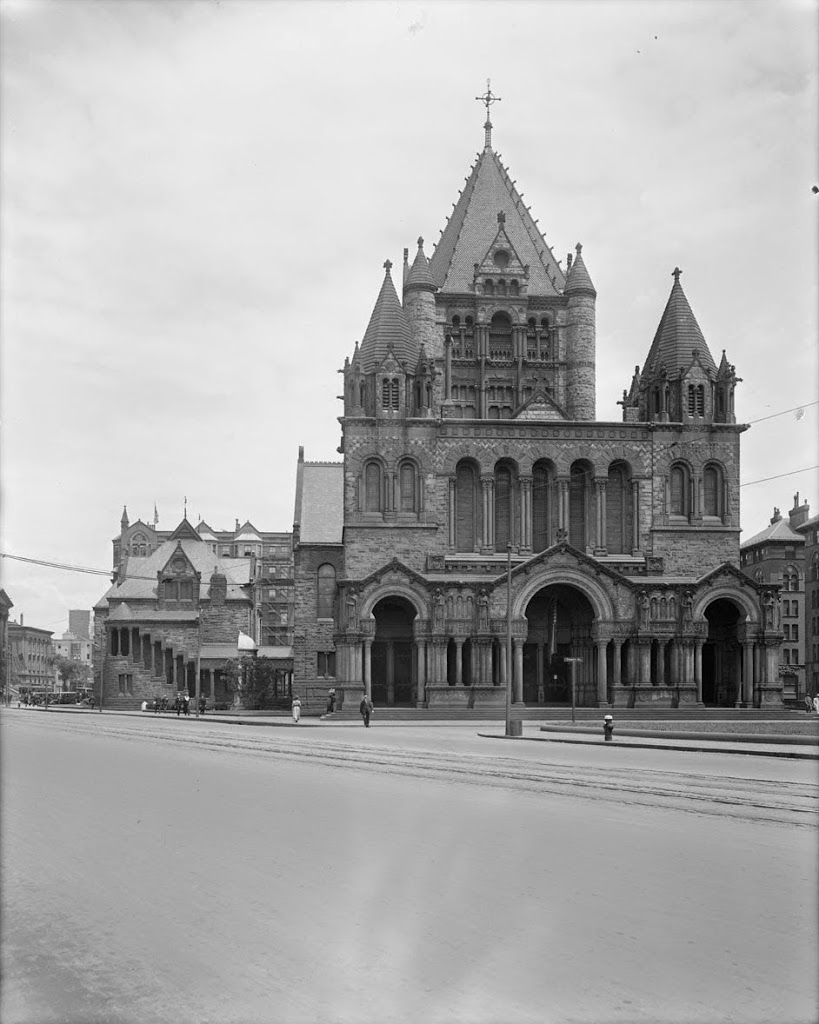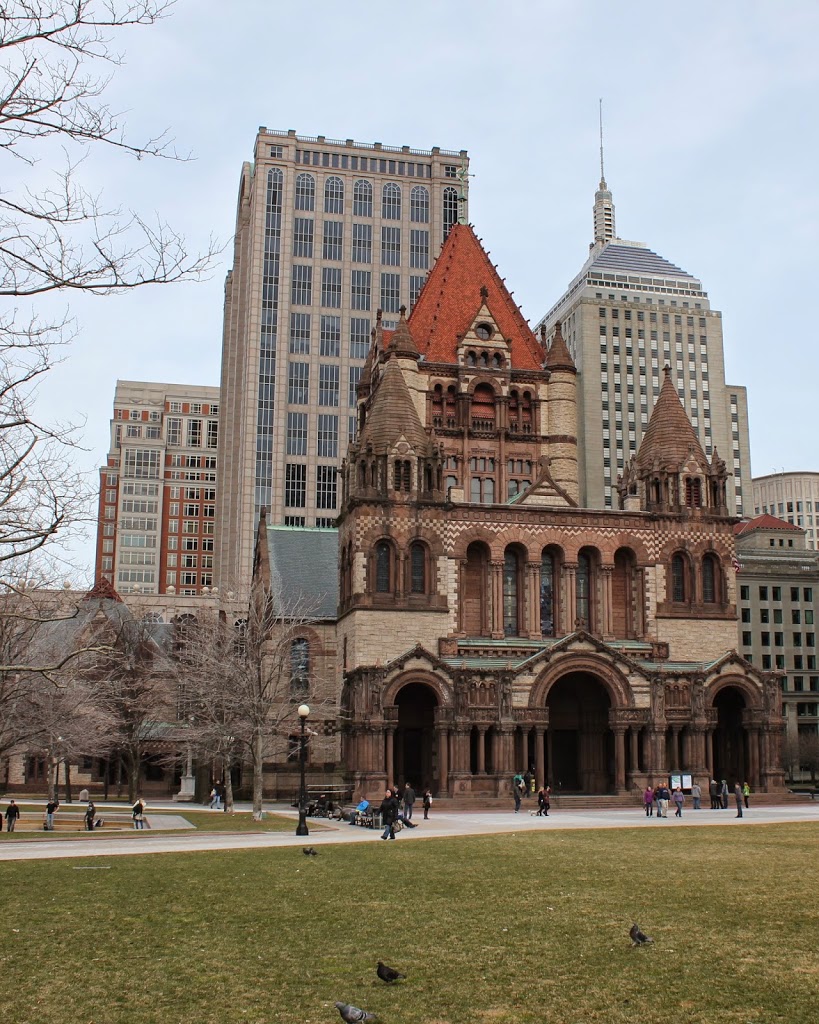Springfield’s old City Hall, sometime before 1905. Photo from Springfield Present and Prospective (1905).
The view in 2023:
Although settled in 1636, Springfield wasn’t incorporated as a city until 1852. Four years later, the first city hall was built here, on the north side of Court Square. It was dedicated with much fanfare on January 1, 1856, and stood here for nearly 50 years. During this time, the city offices were housed on the first floor, with the police department in the basement and a 2,300-seat auditorium on the upper floor. The auditorium was used for a variety of events, including one that resulted in the destruction of the building. On January 6, 1905, a fire started in the auditorium, allegedly caused when a monkey overturned a kerosene lantern. Regardless of the cause, though, the building was a total loss, and eight years later the present-day Springfield Municipal Group was dedicated, with new City Hall, Symphony Hall, and campanile tower in between. Today, the only remnant of the old building is its bell, which is located on the corner just to the right of the current City Hall.


